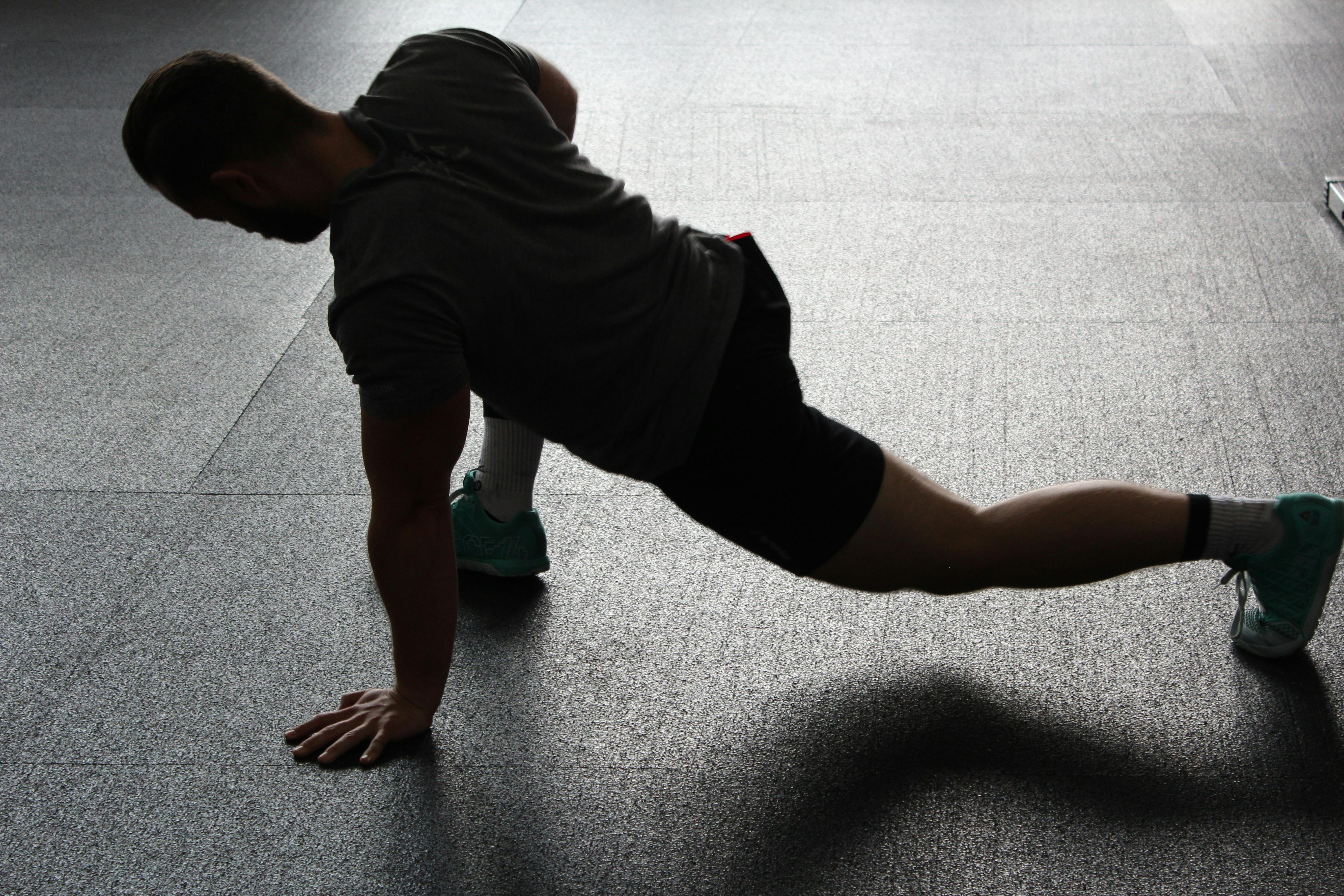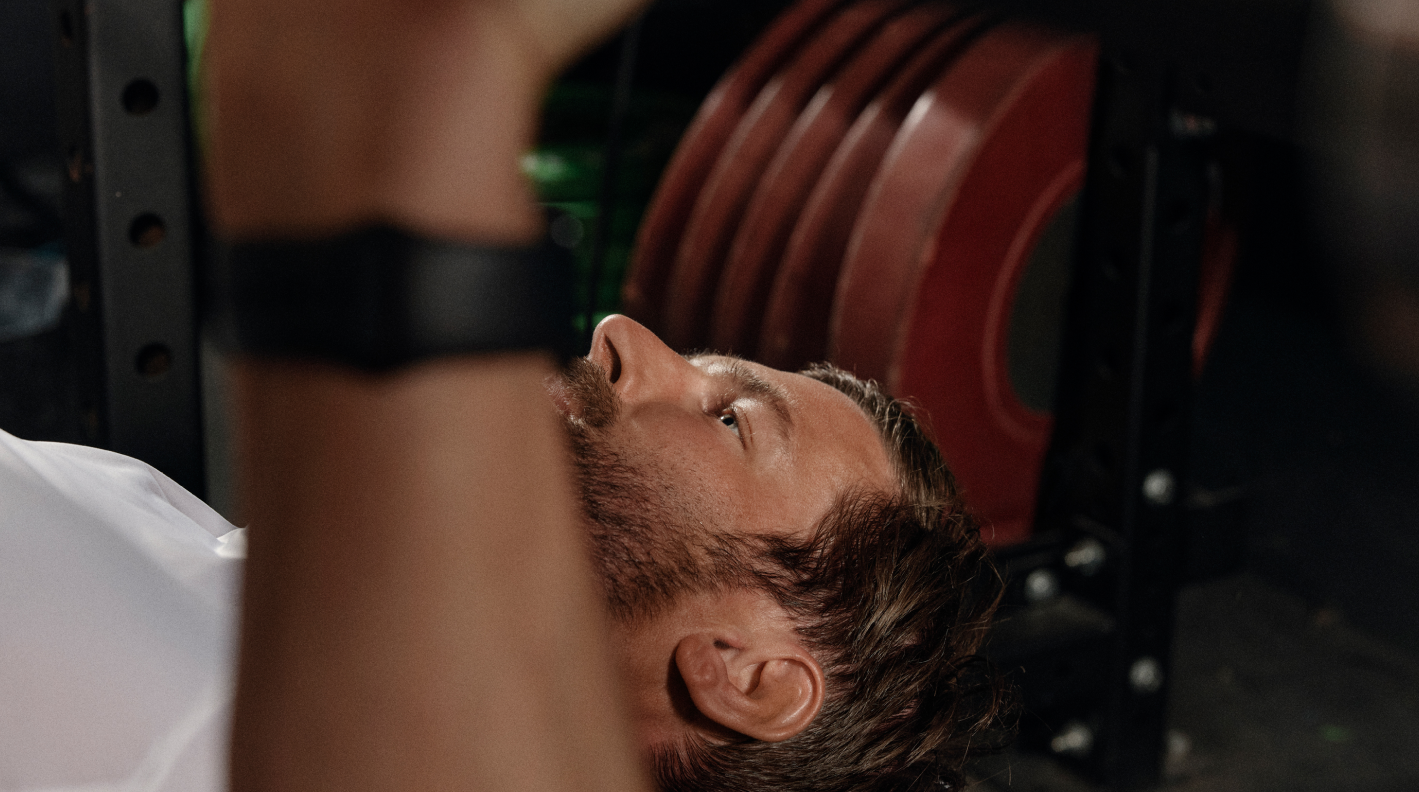DEXA scans: How to use this tool for precise body composition measurement

Key takeaways
- DEXA scans provide a precise breakdown of bone density, fat, and lean muscle mass, offering a clearer picture of overall health than weight alone.
- Traditionally used to diagnose bone conditions like osteoporosis, DEXA scans are now a powerful tool for preventative health and performance optimisation.
- Tracking body composition over time helps tailor exercise, nutrition, and recovery plans — making it easier to target fat loss, build strength, and improve longevity.
Gone are the days when stepping onto a scale was the main measure of one's health or fitness. Thankfully, we now have access to tools that provide a more nuanced picture of our health — one being the DEXA scan.
A DEXA scan gives us detailed insight into our body composition, offering a deeper look beneath the skin. This is crucial for anyone striving to understand their body better, allowing you to gain information about your lean tissue, fat tissue and bone mass.
Below, we'll explore how you can harness this technology in pursuit of health optimisation (and, how we can help you do that).
What is a DEXA scan?
Otherwise known as a bone density scan, a DEXA (dual-energy X-ray absorptiometry) scan uses low-dose X-rays to determine your distribution of fat and muscle as well as your bone mass and bone mineral density.
What is a DEXA scan used for in traditional healthcare?
A DEXA scan can have different uses when viewed through a traditional healthcare lens versus a preventative healthcare perspective.
With the former, a DEXA scan is used to measure bone density. As you age, you lose bone mass and density, which can change the structure of your bones and lead to health complications. By measuring the strength and thickness of your bones, a DEXA scan helps to identify overall bone strength and your risk of fractures.
DEXA scans can also help identify underlying health conditions that have few symptoms. Doctors use these scans to diagnose osteopenia, when someone has lower-than-average bone density, and osteoporosis, which occurs in individuals with a bone density so low they are more susceptible to fractures [1].
For those suffering from these conditions, rarely do symptoms present themselves. Often, diagnosis occurs after a fracture or broken bones, at which point bone scans are done.
A DEXA scan isn’t used to diagnose other conditions. However, doctors may prescribe a scan to assess bone loss or monitor bone mass while an individual is undergoing treatment for various health conditions. Other uses for a DEXA scan include:
- Inflammatory forms of arthritis: Medications used to treat inflammatory forms of arthritis, including rheumatoid arthritis, can lead to bone loss. DEXA bone density scans can help track the effectiveness of such treatments and assess the extent of bone loss.
- Certain cancers, particularly childhood cancer: Due to the need for treatment and medication that can affect bone mass, doctors may use a DEXA scan to monitor the effects of treatment on an individual’s bone mass throughout their cancer care [2].
DEXA scan vs bone scan
It can be easy to confuse a DEXA scan with a bone scan, but they are distinctly different [3]. A bone scan involves imaging testing that’s used to examine any irregularities in the bone.
If bone irregularities are found in the results, this can indicate infection or cancer. In contrast, a DEXA scan specifically measures bone density, which is then used to determine an individual’s risk of developing osteoporosis or osteopenia.
Can a DEXA scan show cancer?
A DEXA scan is used to diagnose osteoporosis or osteopenia — conditions that affect bone density and mass. Consequently, the scans can’t detect or show cancer.
That said, doctors still use DEXA scans on some cancer patients depending on the type of cancer and the treatment required. This is because some treatments and medications can lead to bone loss, and a DEXA bone density testing scan can monitor these effects for individuals throughout their treatment.
How can a DEXA scan be used in preventative healthcare?
Now, let's change the lens and look at how this diagnostic tool can be used in preventative healthcare — this is where Compound comes in. We use DEXA scan data, alongside a plethora of other diagnostics, and infuse it with clinical care and structured programming and coaching to achieve more from great health.
But, before we dive into our Compound program, let's look at what information can be gleaned from this scan:
- Total body fat percentage
- Total body muscle (lean) mass
- Total body fat mass
- Muscle and fat mass of each leg, each arm, trunk, abdomen and head
- Total bone mineral density
- Fat distribution
Understanding your body composition allows you to work out your health and exercise goals to enhance performance and contribute to longevity.
Using DEXA scan diagnostics
Once you have information about your body composition, you can begin with goal setting. Your DEXA data will provide a starting point — where can we go from here?
Personalised fitness routine
No two bodies are the same and gaining personalised data from a DEXA scan allows you to create a fitness regime based exactly on your body.
With this information, you can craft the most effective and precise exercise plan that focuses on areas of improvement, while also cutting down on anything that isn't working.
At Compound, our experts can do this for you.
Dietary adjustments
Analysing your muscle and fat mass provides a guide for dietary adjustments that will help support your fitness goals.
This is where you can look at things like adequate protein intake, which is needed for muscle growth, or how to strike the right calorie balance to encourage fat loss.
Health progress updates
This diagnostic is also a great measure of your health progress, allowing you to see if your effort is paying off.
Monitoring your body composition can also help you detect potential health risk factors like imbalances in visceral fat, which are often associated with conditions like diabetes and heart disease.
How long does a DEXA scan take?
Despite its accuracy in measuring fat, muscle and bone mass, the DEXA scan process is quick and painless!
The procedure requires you to lay on a flat padded surface as the arm of the machine passes over your body to take the scan.
The whole procedure takes around 10-20 minutes, and, depending on the area of your body being scanned, typically, you remain fully clothed throughout. The results are sent to your doctor for later discussion and assessment.
Other things to note for an efficient and comfortable DEXA scan procedure include:
- Stop taking any calcium supplements the day before your scan
- On the day of your scan, wear loose-fitting clothing without zippers or metal
- Leave jewellery at home on the day of your scan
What do your bone density scan results mean?
Alongside your muscle and fat mass results, you'll also receive information about your bone density, given this is traditionally used as a bone density test.
The scan will tell you about the health of your bones and whether immediate action is required to protect their health or if you’re in a healthy range of bone density.
You will receive a ‘T-score’ which measures the difference between your bone density and that of an average healthy person. The score is categorised into bone density that is normal, low (osteopenia), or in the range of osteoporosis.
- T-score of -1 or above: Normal range which signifies your bones are healthy. Despite this, maintaining adequate vitamin D and calcium in the diet is essential, as well as regular exercise.
- T-score of -1 to -2.5: Osteopenia, meaning you have lower than normal bone density. Depending on your age and the level of bone density, action may be taken to protect your bone health.
- T-score of -2.5 or lower: Osteoporosis, meaning immediate action is required due to the high risk of fracture. Your doctor will prescribe osteoporosis treatment to protect your bone health and will monitor it with frequent DEXA scans every one to two years.
‘Z-scores’ are also attained through a DEXA scan and refer to the amount of bone you have compared to other people of the same age, race, and gender. Like the T-score, a Z-score that is too high or too low may require more testing.
Longer, stronger living
DEXA scans are an important tool in the age of personalised medicine and individualised approaches to health. Gaining detailed and accurate data on body composition is not just for elite athletes but for anyone seeking a more profound understanding of their physical being.
At Compound, we take a multi-disciplinary approach to health optimisation and preventative care to help men unlock barriers to everyday performance. Our team of dedicated healthcare professionals and expert specialists are here to help you access the future of proactive healthcare, today.
Compound's Body Transformation Programme combines medical treatments, prescriber support and personalised guidance to help you not just lose weight but completely transform your body and health for life.
- Breakthrough medication: Lose up to 21% of your body weight in 72 weeks with once-weekly, clinically proven treatment. It keeps you feeling fuller for longer, so eating less feels natural. Pair them with the Compound Code to lock results in for good.
- Compound Code: Our medication creates opportunity — Compound helps you seize it. Our proven system makes your treatment work harder. The Compound Code builds the muscle, energy, and fitness that medication alone can't deliver. Our holistic approach transforms not just how you look, but how you feel and function daily. So when you eventually finish treatment, your results don't disappear with it.
Gone are the days when stepping onto a scale was the main measure of one's health or fitness. Thankfully, we now have access to tools that provide a more nuanced picture of our health — one being the DEXA scan.
A DEXA scan gives us detailed insight into our body composition, offering a deeper look beneath the skin. This is crucial for anyone striving to understand their body better, allowing you to gain information about your lean tissue, fat tissue and bone mass.
Below, we'll explore how you can harness this technology in pursuit of health optimisation (and, how we can help you do that).
What is a DEXA scan?
Otherwise known as a bone density scan, a DEXA (dual-energy X-ray absorptiometry) scan uses low-dose X-rays to determine your distribution of fat and muscle as well as your bone mass and bone mineral density.
What is a DEXA scan used for in traditional healthcare?
A DEXA scan can have different uses when viewed through a traditional healthcare lens versus a preventative healthcare perspective.
With the former, a DEXA scan is used to measure bone density. As you age, you lose bone mass and density, which can change the structure of your bones and lead to health complications. By measuring the strength and thickness of your bones, a DEXA scan helps to identify overall bone strength and your risk of fractures.
DEXA scans can also help identify underlying health conditions that have few symptoms. Doctors use these scans to diagnose osteopenia, when someone has lower-than-average bone density, and osteoporosis, which occurs in individuals with a bone density so low they are more susceptible to fractures [1].
For those suffering from these conditions, rarely do symptoms present themselves. Often, diagnosis occurs after a fracture or broken bones, at which point bone scans are done.
A DEXA scan isn’t used to diagnose other conditions. However, doctors may prescribe a scan to assess bone loss or monitor bone mass while an individual is undergoing treatment for various health conditions. Other uses for a DEXA scan include:
- Inflammatory forms of arthritis: Medications used to treat inflammatory forms of arthritis, including rheumatoid arthritis, can lead to bone loss. DEXA bone density scans can help track the effectiveness of such treatments and assess the extent of bone loss.
- Certain cancers, particularly childhood cancer: Due to the need for treatment and medication that can affect bone mass, doctors may use a DEXA scan to monitor the effects of treatment on an individual’s bone mass throughout their cancer care [2].
DEXA scan vs bone scan
It can be easy to confuse a DEXA scan with a bone scan, but they are distinctly different [3]. A bone scan involves imaging testing that’s used to examine any irregularities in the bone.
If bone irregularities are found in the results, this can indicate infection or cancer. In contrast, a DEXA scan specifically measures bone density, which is then used to determine an individual’s risk of developing osteoporosis or osteopenia.
Can a DEXA scan show cancer?
A DEXA scan is used to diagnose osteoporosis or osteopenia — conditions that affect bone density and mass. Consequently, the scans can’t detect or show cancer.
That said, doctors still use DEXA scans on some cancer patients depending on the type of cancer and the treatment required. This is because some treatments and medications can lead to bone loss, and a DEXA bone density testing scan can monitor these effects for individuals throughout their treatment.
How can a DEXA scan be used in preventative healthcare?
Now, let's change the lens and look at how this diagnostic tool can be used in preventative healthcare — this is where Compound comes in. We use DEXA scan data, alongside a plethora of other diagnostics, and infuse it with clinical care and structured programming and coaching to achieve more from great health.
But, before we dive into our Compound program, let's look at what information can be gleaned from this scan:
- Total body fat percentage
- Total body muscle (lean) mass
- Total body fat mass
- Muscle and fat mass of each leg, each arm, trunk, abdomen and head
- Total bone mineral density
- Fat distribution
Understanding your body composition allows you to work out your health and exercise goals to enhance performance and contribute to longevity.
Using DEXA scan diagnostics
Once you have information about your body composition, you can begin with goal setting. Your DEXA data will provide a starting point — where can we go from here?
Personalised fitness routine
No two bodies are the same and gaining personalised data from a DEXA scan allows you to create a fitness regime based exactly on your body.
With this information, you can craft the most effective and precise exercise plan that focuses on areas of improvement, while also cutting down on anything that isn't working.
At Compound, our experts can do this for you.
Dietary adjustments
Analysing your muscle and fat mass provides a guide for dietary adjustments that will help support your fitness goals.
This is where you can look at things like adequate protein intake, which is needed for muscle growth, or how to strike the right calorie balance to encourage fat loss.
Health progress updates
This diagnostic is also a great measure of your health progress, allowing you to see if your effort is paying off.
Monitoring your body composition can also help you detect potential health risk factors like imbalances in visceral fat, which are often associated with conditions like diabetes and heart disease.
How long does a DEXA scan take?
Despite its accuracy in measuring fat, muscle and bone mass, the DEXA scan process is quick and painless!
The procedure requires you to lay on a flat padded surface as the arm of the machine passes over your body to take the scan.
The whole procedure takes around 10-20 minutes, and, depending on the area of your body being scanned, typically, you remain fully clothed throughout. The results are sent to your doctor for later discussion and assessment.
Other things to note for an efficient and comfortable DEXA scan procedure include:
- Stop taking any calcium supplements the day before your scan
- On the day of your scan, wear loose-fitting clothing without zippers or metal
- Leave jewellery at home on the day of your scan
What do your bone density scan results mean?
Alongside your muscle and fat mass results, you'll also receive information about your bone density, given this is traditionally used as a bone density test.
The scan will tell you about the health of your bones and whether immediate action is required to protect their health or if you’re in a healthy range of bone density.
You will receive a ‘T-score’ which measures the difference between your bone density and that of an average healthy person. The score is categorised into bone density that is normal, low (osteopenia), or in the range of osteoporosis.
- T-score of -1 or above: Normal range which signifies your bones are healthy. Despite this, maintaining adequate vitamin D and calcium in the diet is essential, as well as regular exercise.
- T-score of -1 to -2.5: Osteopenia, meaning you have lower than normal bone density. Depending on your age and the level of bone density, action may be taken to protect your bone health.
- T-score of -2.5 or lower: Osteoporosis, meaning immediate action is required due to the high risk of fracture. Your doctor will prescribe osteoporosis treatment to protect your bone health and will monitor it with frequent DEXA scans every one to two years.
‘Z-scores’ are also attained through a DEXA scan and refer to the amount of bone you have compared to other people of the same age, race, and gender. Like the T-score, a Z-score that is too high or too low may require more testing.
Longer, stronger living
DEXA scans are an important tool in the age of personalised medicine and individualised approaches to health. Gaining detailed and accurate data on body composition is not just for elite athletes but for anyone seeking a more profound understanding of their physical being.
At Compound, we take a multi-disciplinary approach to health optimisation and preventative care to help men unlock barriers to everyday performance. Our team of dedicated healthcare professionals and expert specialists are here to help you access the future of proactive healthcare, today.
Compound's Body Transformation Programme combines medical treatments, prescriber support and personalised guidance to help you not just lose weight but completely transform your body and health for life.
- Breakthrough medication: Lose up to 21% of your body weight in 72 weeks with once-weekly, clinically proven treatment. It keeps you feeling fuller for longer, so eating less feels natural. Pair them with the Compound Code to lock results in for good.
- Compound Code: Our medication creates opportunity — Compound helps you seize it. Our proven system makes your treatment work harder. The Compound Code builds the muscle, energy, and fitness that medication alone can't deliver. Our holistic approach transforms not just how you look, but how you feel and function daily. So when you eventually finish treatment, your results don't disappear with it.












